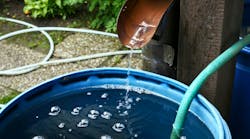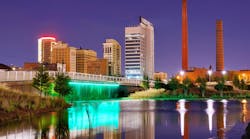Webinar Q&A: Compliance with the new Commercial Industrial and Institutional permit in LA
The Stormwater Solutions’ April webinar, called Compliance with the New CII Permit in L.A.: Who’s In and Who’s Out, discussed the new Commercial Industrial and Institutional (CII) NPDES Permit in two watersheds in the Los Angeles area and what it might mean for the rest of the country. This permit, currently in draft form, is intended to manage stormwater discharges from previously uncovered facilities that may contribute pollutants to federally protected surface waters or require treatment controls based on numeric effluent limits (NELs).
Any commercial, industrial, or institutional site with five-acres or more in impervious cover (including roofs) will be required to seek coverage under the CII Permit. Some examples include shopping centers, office complexes, car dealerships, warehouses, parking lots, private schools, and churches. This webinar is essential for professionals in the commercial, industrial, and institutional sectors who need to understand their responsibilities and ensure compliance with the latest environmental regulations.
Below, the webinar speaker, Sean Porter, CPSWQ, QSD/P, QISP, IGP ToR, Southern California watershed lead for Black & Veatch, answers common audience questions.
Audience: Will the CII Permit supersede the IGP?
Sean Porter: The CII’s intent is to cover portions of IGP facilities not previously covered. From the Draft Permit: “The U.S. EPA designation covers the non-industrial portions of the facilities (e.g., parking lots, rooftops) that are not covered by the IGP.”
Audience: How many CII facilities are in these two watersheds in LA?
SP: The recent numbers I have seen are approximately 600. There are about 190 IGP facilities in these two watersheds with 5+ acres. When added to all the commercial and institutional parcels, that is a lot.
Audience: Where and when would samples need to be collected?
SP: From the Draft Permit: “The Discharger shall collect and analyze discharge samples from two (2) QSEs within the first half of each reporting period (July 1 to December 31 of the preceding year), and two (2) QSEs within the second half of each reporting period (January 1 to June 30). And samples shall be collected from each drainage area at all discharge locations.”
Audience: How will the churches comply?
SP: For private institutions like churches and hospitals, compliance is identified with 3 separate options presented in the Draft Permit.
- Option 1. Enter into a financial agreement with a Watershed Management Group to fund design, construction, and O&M of a regional stormwater project.
- Option 2. Implement BMPs to capture and infiltrate, use on site, or send to sanitary sewer the 85th percentile 24-hour storm event. (capture all runoff)
- Option 3. Full NPDES Permit compliance with NOI, SWPPP, sampling, reporting, training, and compliance with NELs
Audience: What happens to NECs?
SP: From the Draft Permit: “Facilities that have submitted a no exposure certification (NEC) under the General Permit for Stormwater Discharges Associated with Industrial Activities (NPDES No. CAS000001; Order 2014-0057-DWQ by Order 2015- 0122-DWQ & Order 20XX-XXXX-DWQ) (IGP)…. These facilities must obtain coverage under this General Permit for the acreage covered by the NEC.”


